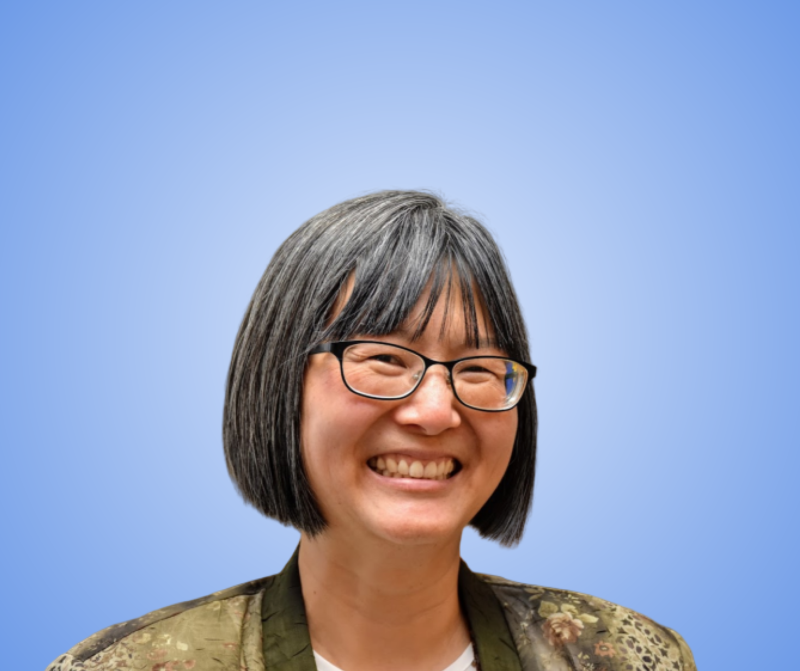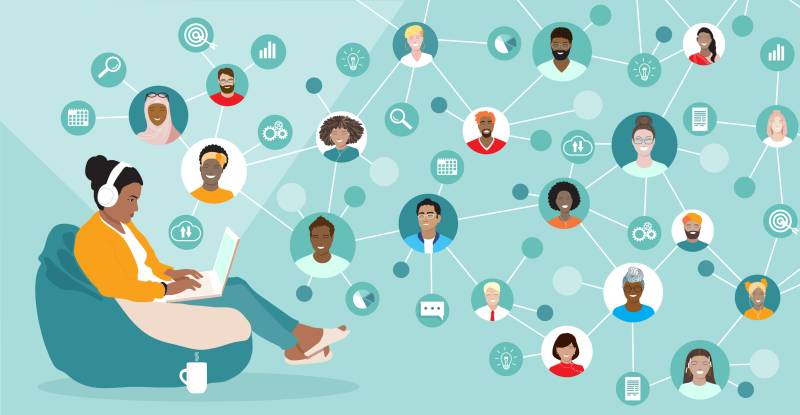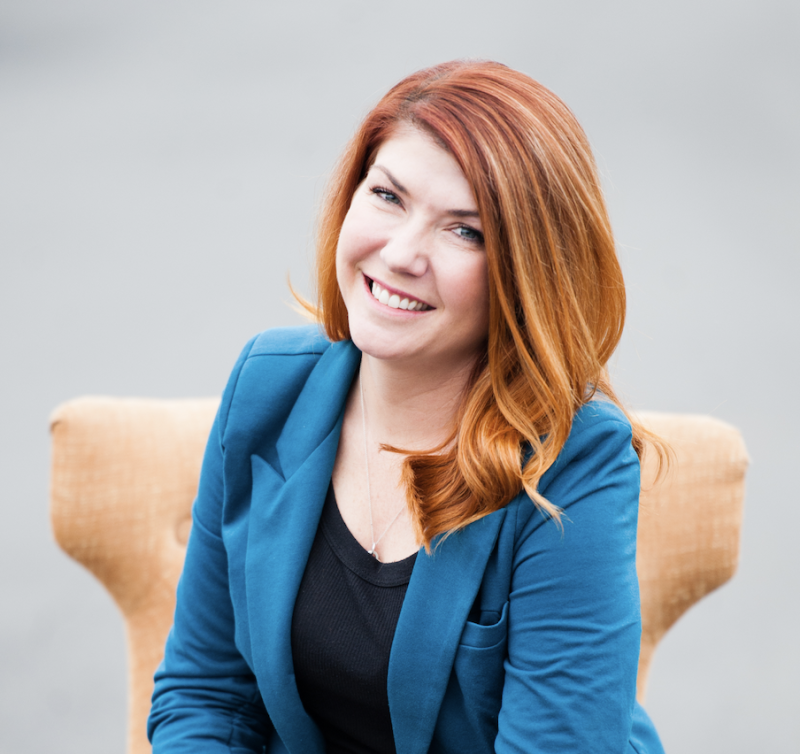Excerpted from “Bring History and Civics to Life” by Karalee Wong Nakatsuka and Laurel Aguilar-Kirchhoff. ©2022 International Society for Technology in Education. Reproduced with permission from the publisher.
Edtech to Connect
There are many ways we can harness educational technology to build community within our classrooms and to bring students into the global community. ISTE Student Standard 1.7 Global Collaborator offers a framework for how to approach this: “Students use digital tools to broaden their perspectives and enrich their learning by collaborating with others and working effectively in teams locally and globally.”
There are many edtech tools that help foster community building while providing global perspectives and engagement for students, both inside and outside of the classroom. Incorporating global community connections into community building helps students form bridges between all the communities they participate in. It may also open new avenues for students to see themselves as part of a larger global community and give them new awareness and understanding of their place in the world.
StoryCorps
- What It Is: A digital archive of recorded interviews and personal stories that convey the humanity of people from all over the world. “StoryCorps’ mission is to preserve and share humanity’s stories in order to build connections between people and create a more just and compassionate world.”
- Global Community Connection: Students can explore stories from across the country and the world, or they can search for specific stories that correlate with content and projects for the classroom. Students have the opportunity to recognize the global humanity that brings us together, along with perspectives that may be different from their own.
Flipgrid GridPals
- What It Is: While many teachers and students may already be familiar with creating short-form videos using Flipgrid in their classrooms, there is a unique opportunity to connect with other students and classrooms across the world using Flipgrid GridPals.
- Global Community Connection: After logging into their teacher accounts, teachers can search and connect with fellow educators from across the world. This allows teachers to collaborate on learning experiences that make connections between their classrooms asynchronously through video (no time zone constraints) in a safe online learning experience.
Digital Citizenship Institute
- What It Is: The Digital Citizenship Institute’s focus is on helping our students connect the world through our shared citizenship in a digital world. It is all about “humanizing the person next to you, around the world, and across the screen. . . .In today’s interconnected world, this is our opportunity to put global education into practice to empower others to become change makers for using tech for good in local, global and digital communities.”
- Global Community Connection: “DigCitKids” is one aspect of student engagement and community that is available from the Digital Citizenship Institute. This initiative is focused on creating digital citizenship opportunities for kids by kids, with a focus on solving real community problems.
Google Earth
- What It Is: Google Earth is more than just an online map; it also provides resources, lessons, and integrations to be used with students. These include “. . . step-by-step guides and tutorials on Google’s Geo Tools, inspirational stories, plus lesson plans, product information, and much more.”
- Global Community Connection: Helping students learn about geography and place gives them a better sense of the world and their place in it. These lessons and resources are varied and help students make connections between people, the land they inhabit, and their impact on it.
PenPal Schools
- What It Is: Making connections and collaborations with students from dozens of countries across the world allows students to read, write, and create original projects. “PenPal Schools connect students from 150 countries to make friends and discover the world.”
- Global Community Connection: Students can collaborate with students from other countries on projects that matter to them. This is a unique opportunity to not only communicate with students from across the world but also work together on projects with an educational context.
Mystery Skype
- What It Is: This is a way to build a global community with other classrooms from across the world. It has been described as a global guessing game, in which teachers collaborate and have their classes meet via Skype (or any other online conferencing platform), then have students try to guess each other’s location. There are many forms of this “Mystery Skype” format, and teachers can be creative in their collaboration to set up the activities (such as only asking the other class yes or no questions).
- Global Community Connection: With activities such as this, teachers and students connect with classrooms across the world, expand their cultural awareness, and hone their geography skills—while also collaborating as a class to guess the location of the mystery classroom.
Global Read Aloud
- What It Is: What if your students could read the same book and collaborate with students from across the world? They can! Each year during a six-week period, the Global Read Aloud helps students and teachers connect with resources and activities that are based on a common book. Teachers can connect with other classes from around the world that are participating and decide how much time they would like to dedicate and how involved they would like to be.
- Global Community Connection: To make these global connections with other classes, teachers can harness the power of edtech to connect using tools such as Skype, Twitter, Padlet, or Flipgrid. “Teachers get a community of other educators to do a global project with, hopefully inspiring them to continue these connections through the year.”
 Karalee Wong Nakatsuka, M.A. E.D., is a veteran middle school U.S. history teacher. Also a Gilder Lehrman Master Teacher, she was recognized in 2019 as the Gilder Lehrman History Teacher of the Year for California and was a top 10 finalist for the national award. She serves on the American250 History Education Advisory Council, the Gilder Lehrman Teacher Advisory Council and the Monticello Teacher Advisory Group. She’s a member of the California Council for the Social Studies (CCSS), the National Council for the Social Studies (NCSS), the iCivics Education Network and the National Council for History Education (NCHE). Nakatsuka appeared in the New York Times multimedia story “What’s Actually Being Taught in History Class?” and was featured in an article in Time Magazine’s September 2021 issue titled “From Teachers to Custodians, Meet the Educators Who Saved a Pandemic School Year.” She’s passionate about using technology to engage and excite students; sharing the stories and the places where history took place; building community in her classroom; and preparing students to develop as empathetic, informed, engaged and active critical thinkers and citizens who care and make a difference in the world.
Karalee Wong Nakatsuka, M.A. E.D., is a veteran middle school U.S. history teacher. Also a Gilder Lehrman Master Teacher, she was recognized in 2019 as the Gilder Lehrman History Teacher of the Year for California and was a top 10 finalist for the national award. She serves on the American250 History Education Advisory Council, the Gilder Lehrman Teacher Advisory Council and the Monticello Teacher Advisory Group. She’s a member of the California Council for the Social Studies (CCSS), the National Council for the Social Studies (NCSS), the iCivics Education Network and the National Council for History Education (NCHE). Nakatsuka appeared in the New York Times multimedia story “What’s Actually Being Taught in History Class?” and was featured in an article in Time Magazine’s September 2021 issue titled “From Teachers to Custodians, Meet the Educators Who Saved a Pandemic School Year.” She’s passionate about using technology to engage and excite students; sharing the stories and the places where history took place; building community in her classroom; and preparing students to develop as empathetic, informed, engaged and active critical thinkers and citizens who care and make a difference in the world.



 Laurel Aguilar-Kirchhoff
Laurel Aguilar-Kirchhoff